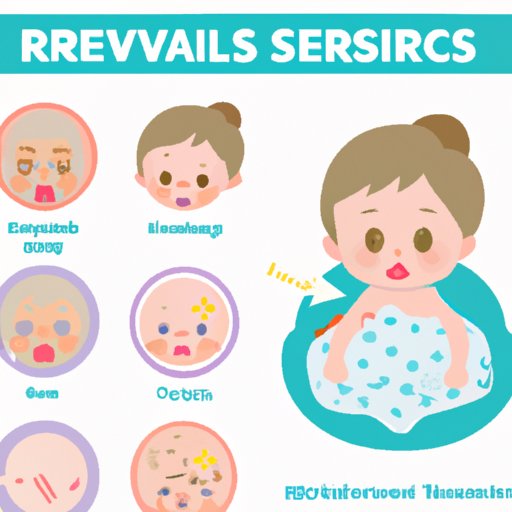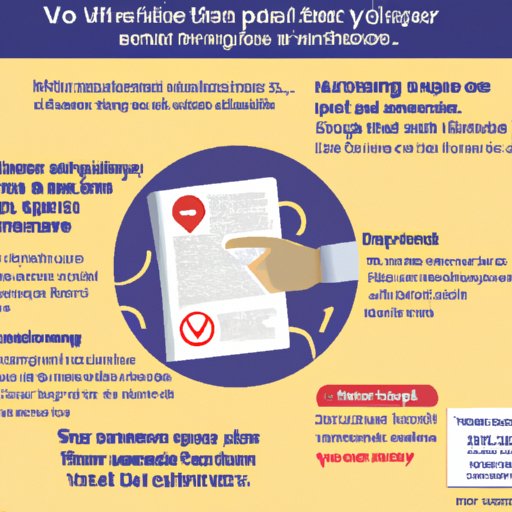
I. Introduction
Respiratory Syncytial Virus (RSV) is a contagious virus that affects the respiratory tract of both children and adults. While some people may experience mild symptoms, others can develop severe illness. RSV poses a particularly serious risk to infants and elderly adults, as well as people with weakened immune systems. As RSV infections tend to spike during the colder months of the year, it’s important to know how to recognize and manage its symptoms. In this article, we will provide detailed information on how long after RSV exposure you show symptoms and how to protect yourself from its spread.
II. RSV: Understanding the Incubation Period and When Symptoms Appear
RSV is unique due to its varying incubation period, which is the time between viral exposure and the onset of symptoms. Although the average timeframe for RSV symptoms to appear is around four to six days, they may arise as soon as two days after, or take up to eight days to appear. Some people exposed to RSV do not experience any symptoms at all. The length of the incubation period depends on multiple factors such as age, overall health, and environmental factors such as temperature and humidity.
III. RSV Symptoms: When to Expect Them and How to Identify Them
RSV symptoms range from mild to severe and vary across age groups. The common signs of RSV include fever, cough, nasal congestion, and difficulty breathing. In infants, the cough may be accompanied by wheezing or rapid breathing, while young children and adults may also experience sore throat, headache, and muscle aches. Symptoms gradually become more severe over the first few days, with peak illness occurring around days three to five.

IV. Protecting Yourself from the Spread of RSV: Insights into How the Virus Spreads and How to Stay Safe
RSV is highly contagious, and it spreads through the air or close personal contact with an infected person or contaminated surface. To reduce the risk of contracting RSV, practice proper hand hygiene by washing hands often with soap and water. Avoid close contact with people who are infected and stay home when you’re feeling unwell. Be sure to disinfect surfaces and objects that may come into contact with the virus.
V. RSV and Infants: What You Need to Know About Timing Symptoms and Seeking Treatment
RSV is a leading cause of respiratory illness in infants, and it’s essential to know when to seek medical attention. Symptoms in infants typically arise around four to six days after exposure, with a runny nose, cough, and low-grade fever as the initial signs. Breathing difficulties, such as wheezing and rapid breathing, may indicate a more severe case and can lead to hospitalization in some cases. If you suspect your infant has contracted RSV, promptly seek medical attention, as infants are more likely to develop complications such as pneumonia.
VI. Managing RSV: Treatment Options Available to Combat Symptoms
While there’s no specific cure for RSV, comfortable self-care measures can help alleviate the symptoms and manage the illness. Drinking plenty of fluids, rest, and using a cool mist humidifier to help ease congestion can be helpful. Acetaminophen may be used to reduce fever and muscle aches, while saltwater drops can help clear nasal congestion. In severe cases, medical treatment with antiviral medications or breathing treatments may be necessary. Only your doctor will be able to determine which management approach is best based on your individual circumstances.
VII. RSV and Seniors: How Symptoms Differ and What to Watch Out For
While seniors generally experience the same symptoms as other age groups, they may develop more severe illness that can be difficult to diagnose. Symptoms may arise more gradually and become more severe over time, making early diagnosis and treatment crucial. Locating and treating the infection when it’s in its early stages is essential as seniors are at risk of developing complications such as pneumonia.
VIII. Conclusion
RSV is a contagious illness that can cause severe complications if left untreated. While there is no vaccine yet for RSV, taking preventive measures such as proper hand hygiene, disinfecting frequently touched surfaces, and avoiding close contact with infected individuals can reduce the risk of infection. As soon as you notice symptoms of RSV, seek medical attention immediately to begin treatment promptly. By arming yourself with knowledge on how long the virus takes to incubate, how to recognize symptoms, and how to protect yourself from the spread, you can help prevent the severity of the disease.





